SODIUM CARBONATE, MONOHYDRATE
Synonym(s):Soda monohydrate, Sodium Carbonate Monohydrate;Sodium carbonate monohydrate
- CAS NO.:5968-11-6
- Empirical Formula: CH5NaO4
- Molecular Weight: 104.04
- MDL number: MFCD00149177
- EINECS: 619-709-7
- SAFETY DATA SHEET (SDS)
- Update Date: 2024-12-18 14:07:02
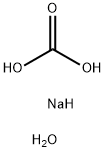
What is SODIUM CARBONATE, MONOHYDRATE?
Chemical properties
white powder
Chemical properties
Sodium carbonate is a white, almost white, or colorless inorganic salt, produced as crystalline powder or granules. It is hygroscopic and odorless with an alkaline taste.
The Uses of SODIUM CARBONATE, MONOHYDRATE
Buffers; pH adjustment.
The Uses of SODIUM CARBONATE, MONOHYDRATE
Sodium Carbonate Monohydrate can be used for sterilization or virus inactivating agent composition.
The Uses of SODIUM CARBONATE, MONOHYDRATE
Buffer component, may be used for the removal of peripheral membrane proteins.
What are the applications of Application
Sodium carbonate monohydrate is a carbonate salt preparation used as a buffer component
Production Methods
Sodium carbonate is produced by the ammonia-soda process, also known as the Solvay process.
Pharmaceutical Applications
Sodium carbonate is used as an alkalizing agent in injectable,
ophthalmic, oral, and rectal formulations.
In effervescent tablets or granules, sodium carbonate is used in
combination with an acid, typically citric acid or tartaric acid.
When the tablets or granules come into contact with water, an acid–
base reaction occurs in which carbon dioxide gas is produced and
the product disintegrates. Raw materials with low moisture
contents are required to prevent the early triggering of the
effervescent reaction.
As an alkalizing agent, concentrations of sodium carbonate
between 2% and 5% w/w are used in compressed tablet
formulations. As an effervescent agent, concentrations of
sodium carbonate up to 10% w/w can be used.
Therapeutically, sodium carbonate is also used as an oral
antacid.
Industrial uses
The most prominent characteristic of soda ash in solution is the high buffered pH response. For example, changing the sodium carbonate dosage from 0.03% to 30% only causes the solution pH to change from 10.5 to 11.7. Because of this, in mineral processing application, soda ash is used for pH control to a maximum value of 10.5.
Industrial uses
Soda ash is the name of various grades of sodium carbonate (Na2CO3). A large portion
of soda ash is manufactured via the Solvay process, based on the following reaction:
NH3 + CO2 + H2O → NH4HCO3
NaCl + NH4HCO3→ NaHCO3 + NH4Cl
2NaHCO3 + heat → Na2CO3 + CO2 (recycled)
Soda ash is an off-white to white anhydrous powder or granular material. The quality
of soda ash is usually characterized by the percent of sodium oxide (Na2O) content.
Safety
Sodium carbonate is used in injectable, oral, and rectal pharmaceutical
formulations. The pure form of sodium carbonate is mildly
toxic by ingestion, moderately toxic by inhalation and SC routes,
and very toxic by the IP route. It is irritating to the skin and eyes.
Dust and vapors of sodium carbonate may irritate mucous
membranes, causing coughing and shortness of breath. It also has
experimental reproductive effects.
Sodium carbonate can migrate to food from packaging
materials. When used as an excipient or antacid, sodium carbonate
is generally regarded as a nontoxic and nonirritating material.
LD50 (mouse, IP): 0.12 g/kg
LD50 (mouse, SC): 2.21 g/kg
LD50 (rat, oral): 4.09 g/kg
storage
Sodium carbonate converts to the monohydrate form when in contact with water and produces heat. It begins to lose carbon dioxide at temperatures above 400℃ and decomposes before boiling. Store in airtight containers.
Incompatibilities
Sodium carbonate decomposes when in contact with acids in the presence of water to produce carbon dioxide and effervescence. It may react violently with aluminum, phosphorous pentoxide, sulfuric acid, fluorine, and lithium.
Regulatory Status
GRAS listed. Accepted for use as a food additive in Europe.
Included in the FDA Inactive Ingredients Database (injections;
ophthalmic solution; oral capsules and tablets; rectal suspensions).
Included in the Canadian List of Acceptable Non-medicinal
Ingredients. Included in parenteral (powder for solution for
injection) and nonparenteral medicines (oral effervescent tablets,
soluble tablets, granules, lozenges, chewing gums) licensed in the
UK.
USP32–NF27 allows either the anhydrous or the monohydrate
form.
Properties of SODIUM CARBONATE, MONOHYDRATE
| Melting point: | 851 °C(lit.) |
| Boiling point: | 1600 °C |
| Density | 2.53 |
| storage temp. | Store at RT. |
| solubility | H2O: 1 M at 20 °C, clear, colorless |
| form | Powder/Solid |
| color | White |
| Specific Gravity | 2.25 |
| Water Solubility | Soluble in water. Insoluble in alcoholSoluble in water and glycerol. Insoluble in alcohol, acetone, alkyl acetates,benzonitrile and liquid ammonia. |
| Sensitive | Hygroscopic |
| Merck | 14,8596 |
| Dielectric constant | 3.0(Ambient) |
| Stability: | Stable. Incompatible with strong acids, aluminium, fluorine, lithium, phosphorus oxides. |
| CAS DataBase Reference | 5968-11-6(CAS DataBase Reference) |
| EPA Substance Registry System | Sodium carbonate, monohydrate (5968-11-6) |
Safety information for SODIUM CARBONATE, MONOHYDRATE
| Signal word | Warning |
| Pictogram(s) |
 Exclamation Mark Irritant GHS07 |
| GHS Hazard Statements |
H319:Serious eye damage/eye irritation |
| Precautionary Statement Codes |
P264:Wash hands thoroughly after handling. P264:Wash skin thouroughly after handling. P280:Wear protective gloves/protective clothing/eye protection/face protection. P305+P351+P338:IF IN EYES: Rinse cautiously with water for several minutes. Remove contact lenses, if present and easy to do. Continuerinsing. P337+P313:IF eye irritation persists: Get medical advice/attention. |
Computed Descriptors for SODIUM CARBONATE, MONOHYDRATE
SODIUM CARBONATE, MONOHYDRATE manufacturer
Kronox Lab Sciences Pvt Ltd
ARRAKIS INDUSTRIES LLP
Anand Agencies
Buradon Inc.
Sonu Chem
Techno Pharmchem
New Products
Tert-butyl bis(2-chloroethyl)carbamate (S)-3-Aminobutanenitrile hydrochloride N-Boc-D-alaninol N-BOC-D/L-ALANINOL N-octanoyl benzotriazole 3-Morpholino-1-(4-nitrophenyl)-5,6-dihydropyridin- 2(1H)-one Furan-2,5-Dicarboxylic Acid Tropic acid Fmoc-Val-Cit-PAB DIETHYL AMINOMALONATE HYDROCHLORIDE 1,1’-CARBONYLDIIMIDAZOLE R-2-BENZYLOXY PROPIONIC ACID 1,1’-CARBONYLDI (1,2-4 TRIAZOLE) N-METHYL INDAZOLE-3-CARBOXYLIC ACID (2-Hydroxyphenyl)acetonitrile 4-Bromopyrazole 5-BROMO-2CYANO PYRIDINE 5-broMo-2-chloro-N-cyclopentylpyriMidin-4-aMine 2-(Cyanocyclohexyl)acetic acid 4-methoxy-3,5-dinitropyridine 2-aminopropyl benzoate hydrochloride 1-(4-(aminomethyl)benzyl)urea hydrochloride tert-butyl 4- (ureidomethyl)benzylcarbamate diethyl 2-(2-((tertbutoxycarbonyl)amino) ethyl)malonateRelated products of tetrahydrofuran


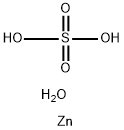


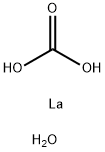
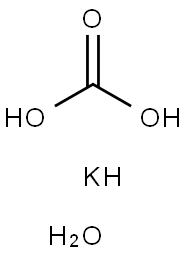
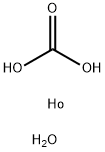
You may like
-
 Soda Ash 99%View Details
Soda Ash 99%View Details -
 Soda Ash 99%View Details
Soda Ash 99%View Details -
 Sodium Carbonate Monohydrate CASView Details
Sodium Carbonate Monohydrate CASView Details -
 SODIUM CARBONATE MONOHYDRATE 99%View Details
SODIUM CARBONATE MONOHYDRATE 99%View Details -
 Sodium carbonate monohydrate, 98% 99%View Details
Sodium carbonate monohydrate, 98% 99%View Details -
 Sodium carbonate monohydrate 98%View Details
Sodium carbonate monohydrate 98%View Details -
 Sodium carbonate monohydrate CASView Details
Sodium carbonate monohydrate CASView Details -
 SODIUM CARBONATE MONOHYDRATE AR/ACS CASView Details
SODIUM CARBONATE MONOHYDRATE AR/ACS CASView Details